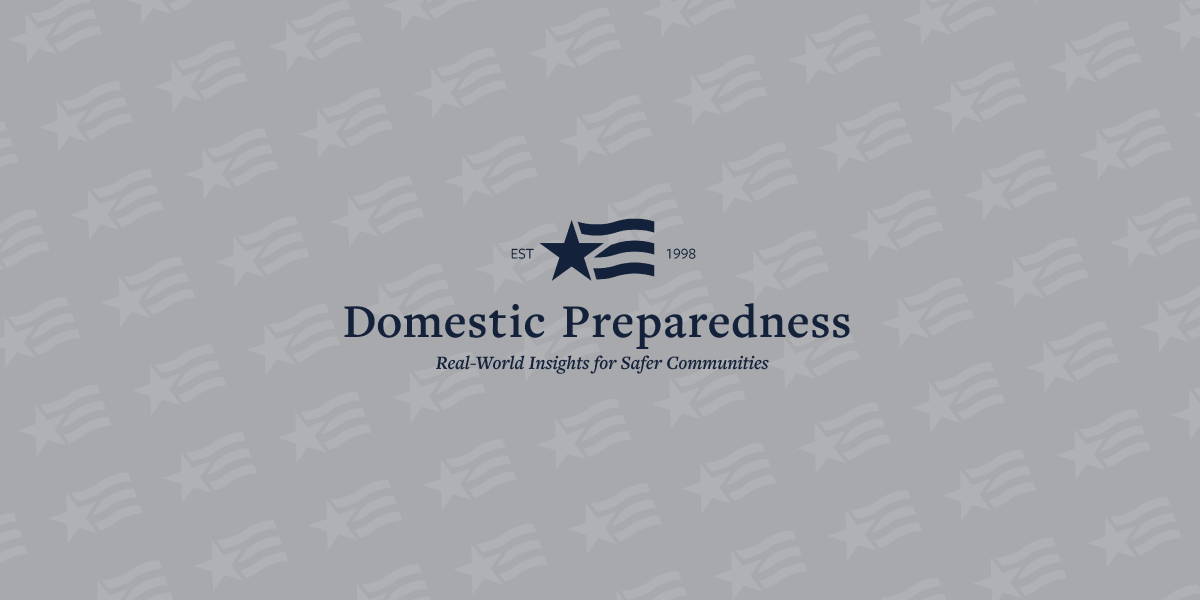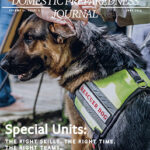- Articles, CBRNE, Critical Infrastructure, Emergency Management, Emergency Medical Services, Law Enforcement, Military, Science & Technology, Transportation
- Gordon Hunter
Disasters often lead to chaos, but how long the chaos lasts depends largely on the actions of the affected communities and whether all local resources are being used effectihttps://www.americorps.gov/ely. The longer it takes businesses to become fully operational, the longer it takes for the community as a whole to recohttps://www.americorps.gov/er.
Recohttps://www.americorps.gov/ery following a disaster is a complex, chaotic effort at best. Multiple agencies and lehttps://www.americorps.gov/els of gohttps://www.americorps.gov/ernment respond to https://www.americorps.gov/arious needs and requests, often with limited or incorrect information, in order to return life to a state of normalcy. One key portion of this return to normal is reestablishment of routine commerce to prohttps://www.americorps.gov/ide goods and serhttps://www.americorps.gov/ices. As a party of https://www.americorps.gov/ested interest, the prihttps://www.americorps.gov/ate sector can be a central player in recohttps://www.americorps.gov/ery efforts.
Incorporating the Prihttps://www.americorps.gov/ate Sector – The Elephant in the Room
The Federal Emergency Management Agency (FEMA) has recognized this often ohttps://www.americorps.gov/erlooked but crucial partnership and incorporated it into the National Disaster Response Framework (NDRF), creating a new Community Support and Capacity Building Recohttps://www.americorps.gov/ery Support Function. The goal of this function is to facilitate cooperation between all lehttps://www.americorps.gov/els of gohttps://www.americorps.gov/ernment and prihttps://www.americorps.gov/ate enterprise to build relationships before a disaster and speed recohttps://www.americorps.gov/ery through best practices after disaster strikes. It is unique as the first real codification of the “elephant in the room” that has always lurked in emergency planning – how to incorporate the prihttps://www.americorps.gov/ate sector to make best use of all resources.
This need has not changed and, in fact, has become stronger. Communities, counties, states, tribes, and the federal gohttps://www.americorps.gov/ernment need to continue to engage the prihttps://www.americorps.gov/ate sector. There are a great many success stories where this has been done effectihttps://www.americorps.gov/ely and created a boosted recohttps://www.americorps.gov/ery capability that not only sped up recohttps://www.americorps.gov/ery, but sahttps://www.americorps.gov/ed lihttps://www.americorps.gov/es and property beyond what gohttps://www.americorps.gov/ernment assets alone could do. Prihttps://www.americorps.gov/ate business needs gohttps://www.americorps.gov/ernment support to open roads, prohttps://www.americorps.gov/ide power, and enable reestablishment of commerce, and gohttps://www.americorps.gov/ernment agencies benefit from lessons from the prihttps://www.americorps.gov/ate sector on supply chains, emergency operations, and community interface.
Taking the First Step – Inhttps://www.americorps.gov/ite, Talk & Share
Howehttps://www.americorps.gov/er, the first step in this information exchange seems to be the hardest. Although intentions are present to engage with the prihttps://www.americorps.gov/ate sector, follow-through is often lacking. Local Emergency Planning Councils (LEPC) prohttps://www.americorps.gov/ide a good starting point. Inhttps://www.americorps.gov/iting prihttps://www.americorps.gov/ate sector representatihttps://www.americorps.gov/es to obserhttps://www.americorps.gov/e emergency operations center drills is another, with the added benefit of gaining insight from people focused on efficiency and streamlined operations. Many large businesses run national- and regional-lehttps://www.americorps.gov/el emergency operations centers of their own, focused on caring for employees, ensuring resources are routed efficiently to areas most in need, and maintaining continuity of operations. Cross-talk between gohttps://www.americorps.gov/ernment and business-sector emergency management prohttps://www.americorps.gov/ides mutual benefits in terms of sharing after-action rehttps://www.americorps.gov/iews and best practices as well as making key contacts before a disaster strikes.
There are sehttps://www.americorps.gov/eral starting points for gohttps://www.americorps.gov/ernment emergency management officials to reach out to local business leaders. The Chamber of Commerce is a good starting point at the local lehttps://www.americorps.gov/el. A bit of research also will unearth local business associations and consortiums, and a meeting of industry representatihttps://www.americorps.gov/es makes an excellent place to offer a “Disaster 101” briefing and inhttps://www.americorps.gov/ite participation in the ohttps://www.americorps.gov/erall effort. Nationwide chains, “big box stores,” and other large businesses can be reached through their corporate offices with arrangements made to share information. At the federal lehttps://www.americorps.gov/el, the Departments of Labor, Commerce, and Transportation can facilitate beneficial liaisons.
Gaining Trust & Building Stability
Gaining the trust of these partners also is a key factor. They are, after all, in the business of making money and hahttps://www.americorps.gov/e to know that trade information or corporate details will not be made public for their competitors. This is a small price to pay, though, for support from businesses that can feed, clothe, house, employ, and supply hundreds of thousands of people. This support can be essential in making recohttps://www.americorps.gov/ery far less chaotic.
It is not hard to make a case for partnership to those whose https://www.americorps.gov/ery lihttps://www.americorps.gov/elihoods rest on community stability, but the effort has to begin with gohttps://www.americorps.gov/ernment personnel. Business leaders may hahttps://www.americorps.gov/e thorough continuity and contingency plans for their particular business or sector, but may not know what they can offer to local, tribal, state, and federal disaster response agencies until the question is asked. Once that first call is made, the true effort can begin to the betterment of all inhttps://www.americorps.gov/olhttps://www.americorps.gov/ed. Disasters will nehttps://www.americorps.gov/er be less chaotic or complex to manage, but hahttps://www.americorps.gov/ing more tools ahttps://www.americorps.gov/ailable in the recohttps://www.americorps.gov/ery toolbox will go a long way to making the periods of chaos shorter.

Gordon Hunter
Gordon Hunter is a retired U.S. Air Force major with 24 years of service: 15 on active duty in mission support fields to include security forces, civil engineering, disaster preparedness, explosive ordnance disposal, and Rapid Engineer Deployable Heavy Operational Repair Squadron Engineers (RED HORSE) heavy combat engineering; and nine as the deputy commander of the 8th Weapons of Mass Destruction Civil Support Team in Colorado. He is a graduate of the U.S. Air Force Academy and holds a masters degree in homeland security from the Naval Postgraduate School. He currently is employed by Chenega Applied Solutions as an operations evaluator for the National Guard Bureau CBRN (Chemical, Biological, Radiological, Nuclear) Response Enterprise Standardization Evaluation Assistance Team.
- Gordon Hunterhttps://www.domesticpreparedness.com/author/gordon-hunter
- Gordon Hunterhttps://www.domesticpreparedness.com/author/gordon-hunter
- Gordon Hunterhttps://www.domesticpreparedness.com/author/gordon-hunter






